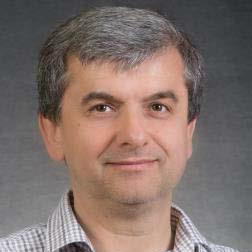Multicellular Self-Assembly in Biofabrication
A special issue of Life (ISSN 2075-1729). This special issue belongs to the section "Cell Biology and Tissue Engineering".
Deadline for manuscript submissions: closed (15 November 2021) | Viewed by 482
Special Issue Editors
Interests: three-dimensional (3D) bioprinting; cell spheroids; tissue engineering; multicellular self-assembly; computational models
Special Issues, Collections and Topics in MDPI journals
Interests: molecular dynamics; multicellular self-assembly; dynamics of multicellular systems; peptide–lipid membrane interactions; anomalous dynamics in biomolecular systems
Special Issue Information
Dear Colleagues,
Recent progress in the understanding of morphogenesis have paved the way to exciting applications of multicellular self-assembly. Stem cells have been coaxed in the laboratory to acquire an embryo-like architecture, undergo epithelial–mesenchymal transition, and develop gene expression patterns observed in gastrulating embryos. The emergent research field of synthetic development has led to the creation of artificial genetic programs that use cell–cell signaling to control cadherin-mediated cell adhesion. Advancements in polymer chemistry and microchip technology have been harnessed to build multicellular spheroids of reproducible size and composition, suitable for diverse applications. Multicellular tumor spheroids placed in a variety of embedding media have served as models of the tumor microenvironment, clarifying fundamental mechanisms of tumor progression and providing test benches for anticancer-drug development. Cell spheroids have also served as building blocks of tissue constructs, delivered by bioprinters. Toroidal and cylindrical microtissues have also been produced, along with dedicated methods for their gentle manipulation. In a contiguous arrangement, microtissues fused into larger tissue constructs and the outcome of the process has been investigated by computer simulations. The synergy of computer modeling and experiments has contributed to the optimization of biofabrication protocols, providing solutions to long-standing problems in tissue engineering, such as the vascularization of bulky tissue constructs. Thus, self-organizing multicellular structures behave as tissue-like biomaterials and are indispensable for fundamental research in developmental biology and wound healing, regenerative medicine (by replacing damaged tissues or promoting tissue regeneration) and translational medicine (as human disease models or tissue constructs for drug testing). This Special Issue aims to catalyze interdisciplinary collaborations between experts in molecular, cellular and tissue-scale phenomena involved in the self-assembly of live cells.
Prof. Dr. Adrian Neagu
Prof. Dr. Ioan Kosztin
Prof. Dr. Gabor Forgacs
Guest Editors
Manuscript Submission Information
Manuscripts should be submitted online at www.mdpi.com by registering and logging in to this website. Once you are registered, click here to go to the submission form. Manuscripts can be submitted until the deadline. All submissions that pass pre-check are peer-reviewed. Accepted papers will be published continuously in the journal (as soon as accepted) and will be listed together on the special issue website. Research articles, review articles as well as short communications are invited. For planned papers, a title and short abstract (about 100 words) can be sent to the Editorial Office for announcement on this website.
Submitted manuscripts should not have been published previously, nor be under consideration for publication elsewhere (except conference proceedings papers). All manuscripts are thoroughly refereed through a single-blind peer-review process. A guide for authors and other relevant information for submission of manuscripts is available on the Instructions for Authors page. Life is an international peer-reviewed open access monthly journal published by MDPI.
Please visit the Instructions for Authors page before submitting a manuscript. The Article Processing Charge (APC) for publication in this open access journal is 2600 CHF (Swiss Francs). Submitted papers should be well formatted and use good English. Authors may use MDPI's English editing service prior to publication or during author revisions.
Keywords
- cell spheroids
- tissue engineering
- 3D bioprinting
- synthetic morphogenesis
- tumor microenvironment
- drug discovery








